Abstract
The response of strain 2 guinea pigs to limiting doses of bovine serum albumin is under dominant genetic control linked with the poly-L-lysine gene. Inbred strains 2 and 13 guinea pigs make similar antibody responses to 10 μg bovine serum albumin, whereas strain 2 but not strain 13 animals produce significant amounts of antibodies in response to 0.1 μg. The relationship between the presence of the poly-L-lysine gene and the ability to respond to limiting doses of bovine serum albumin has also been investigated in random-bred Hartley strain guinea pigs.
Full text
PDF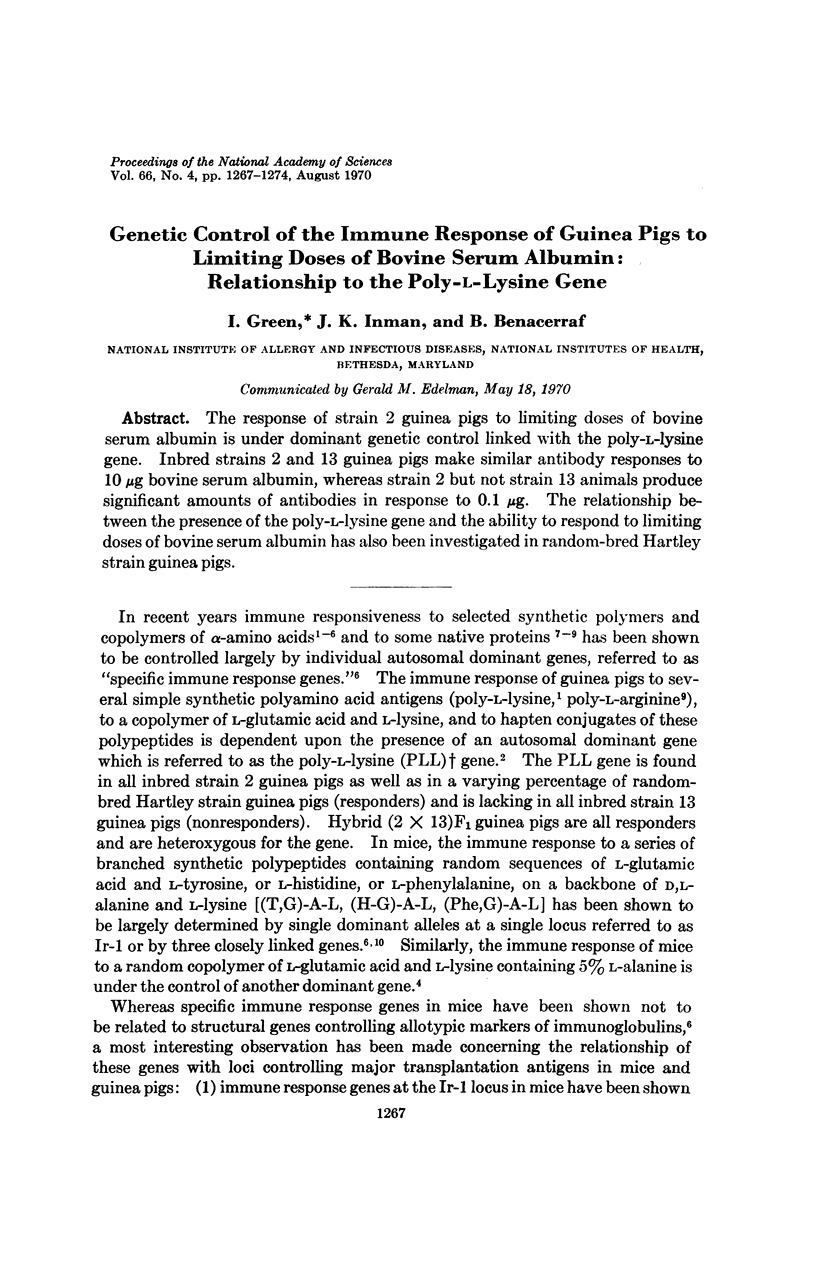
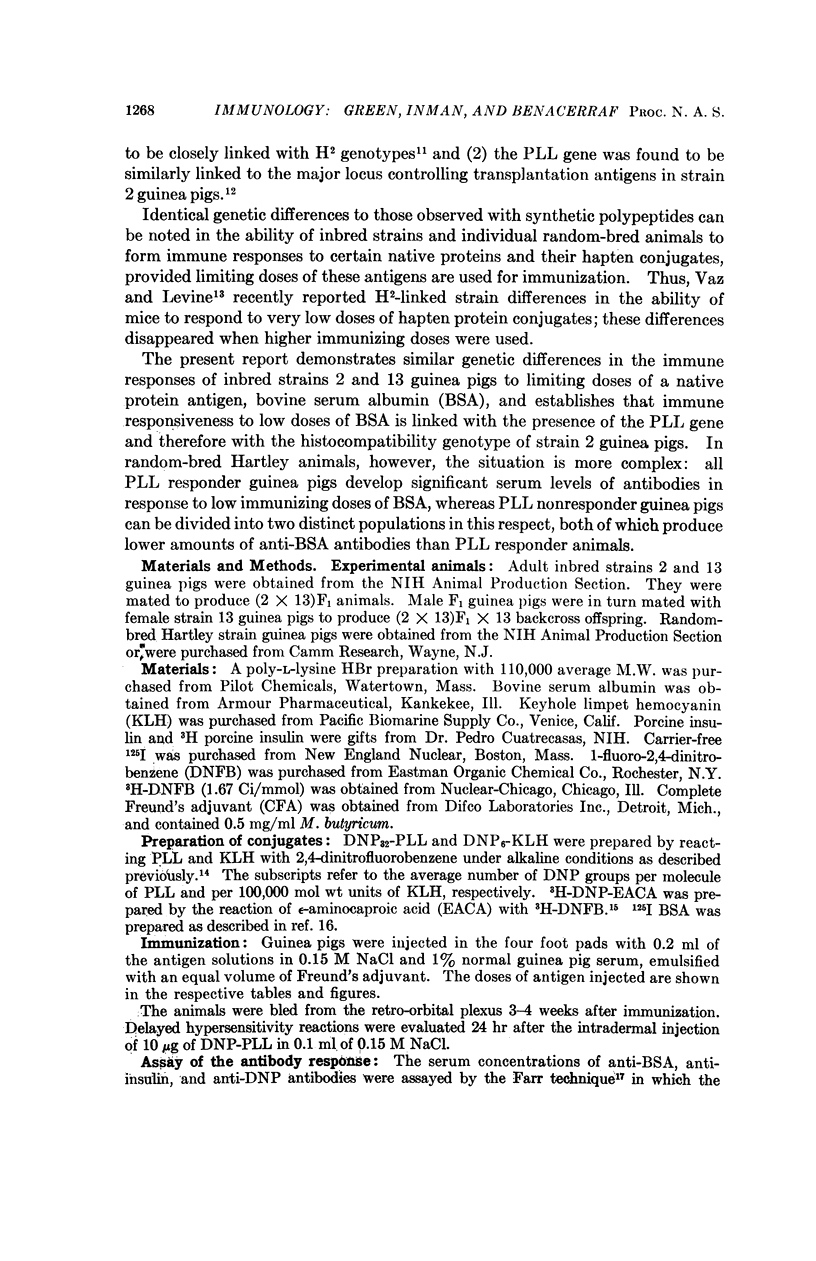
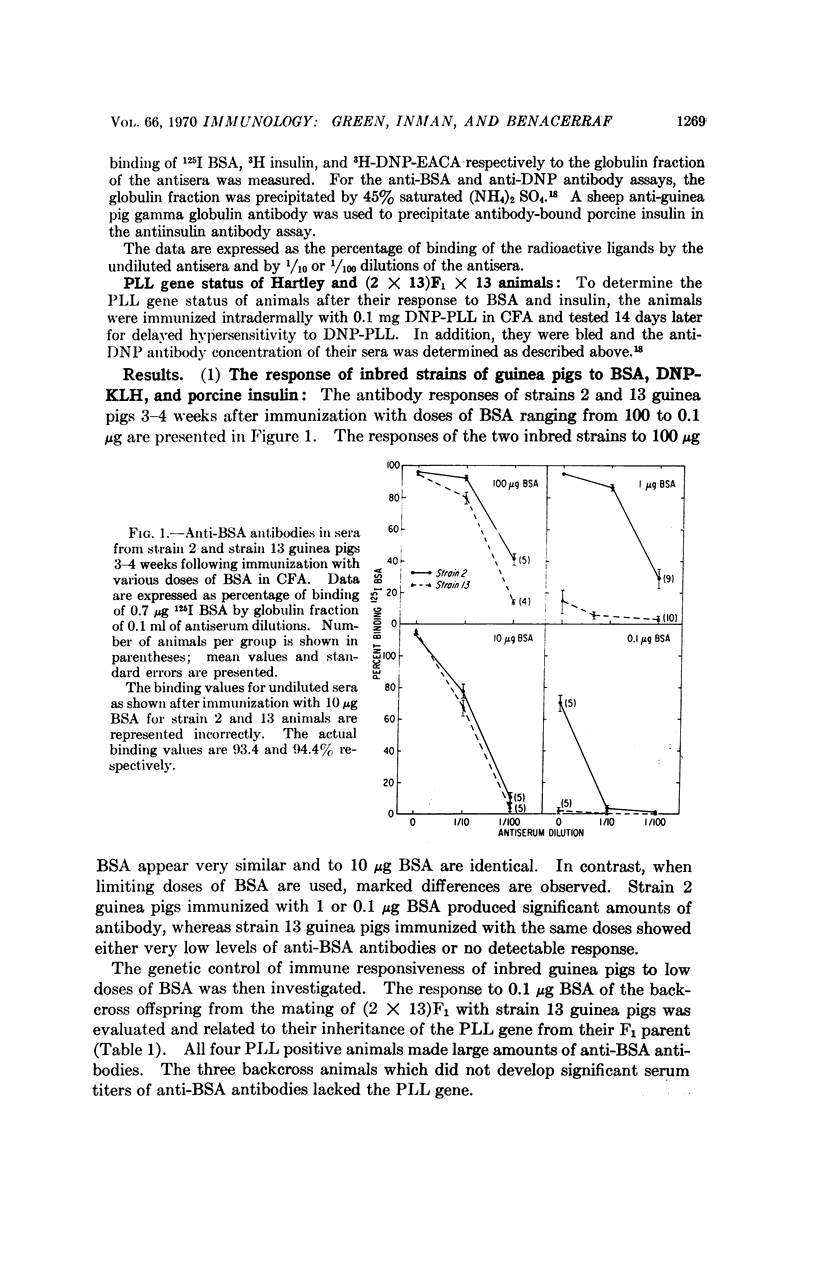
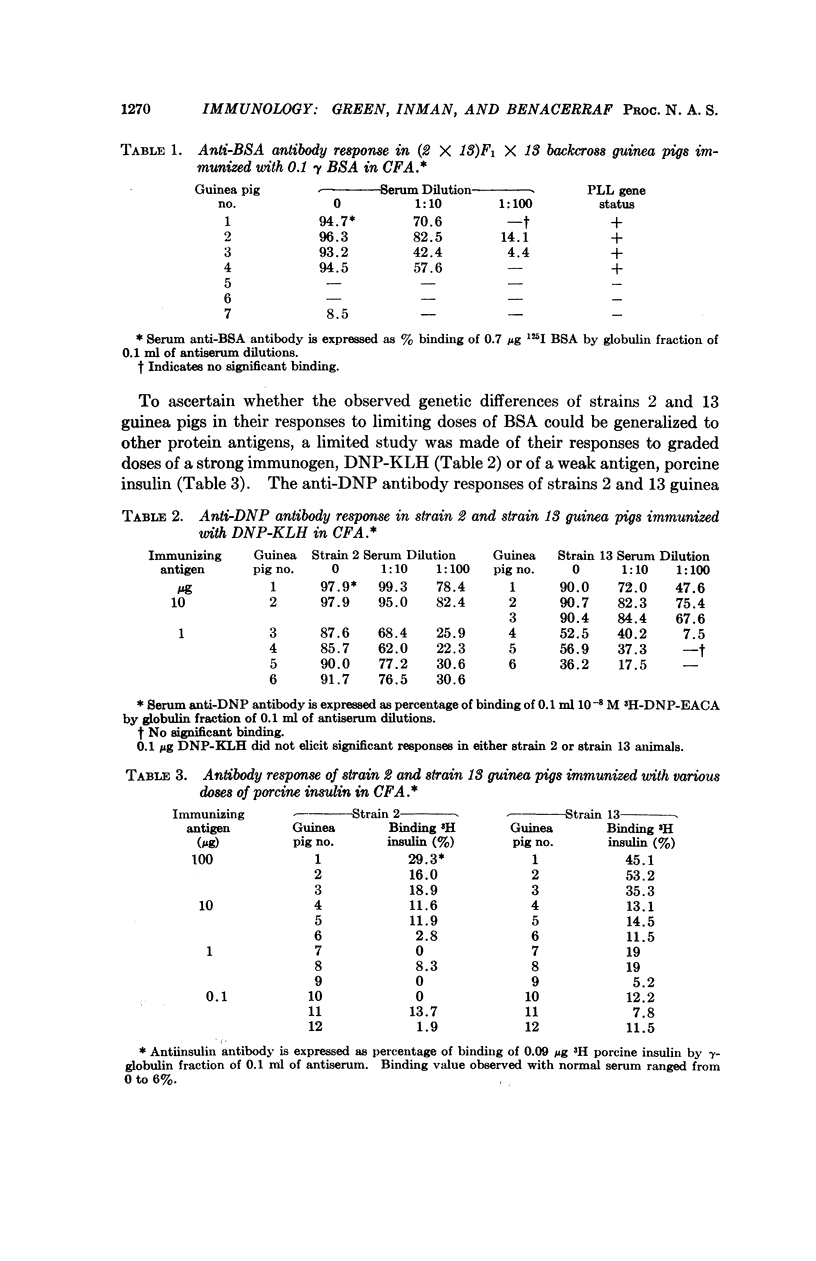
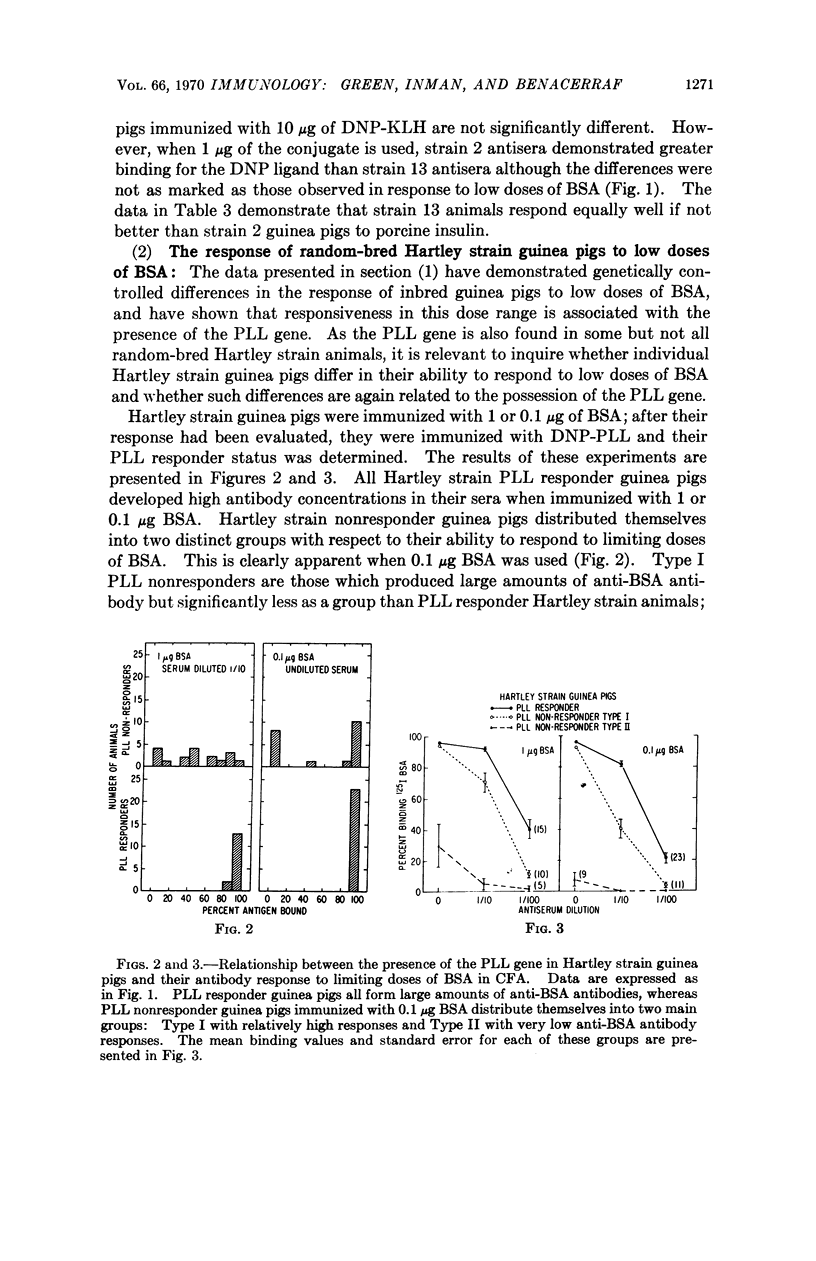
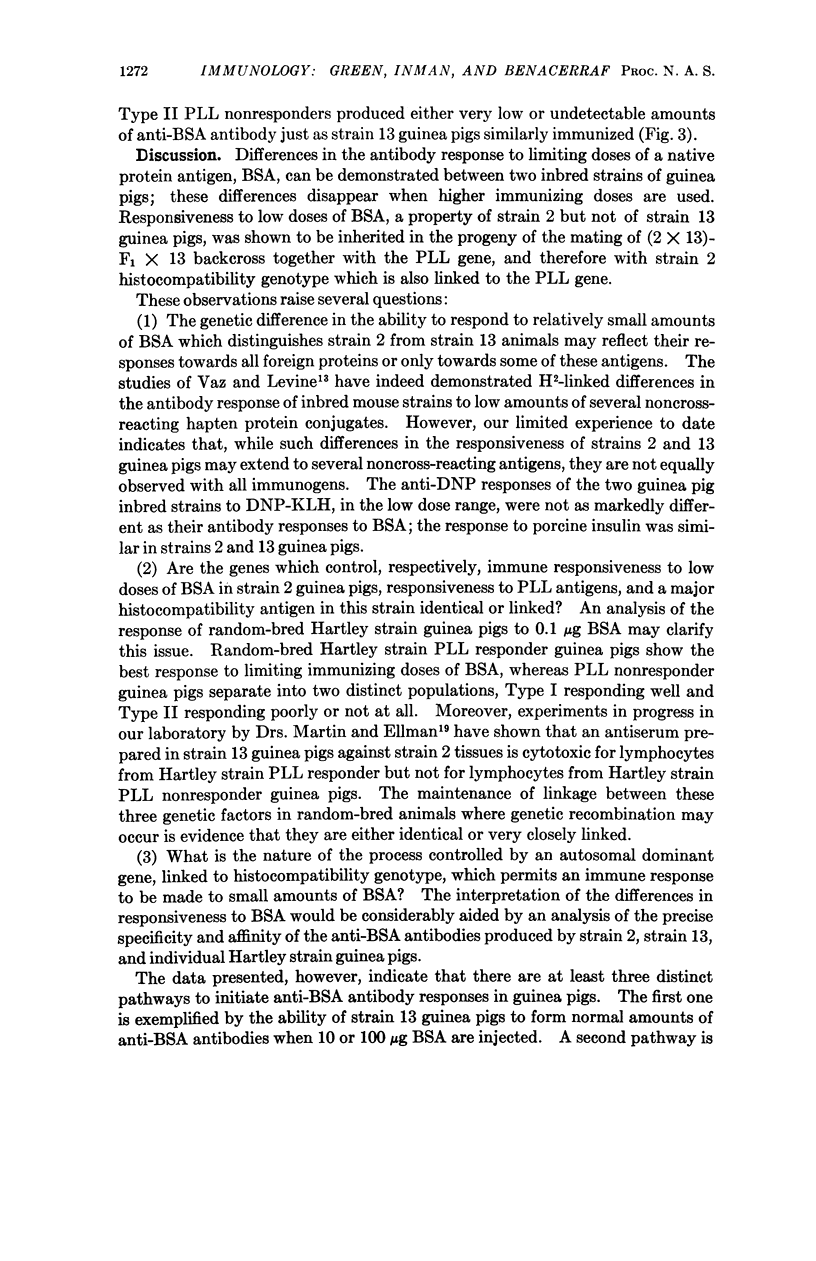
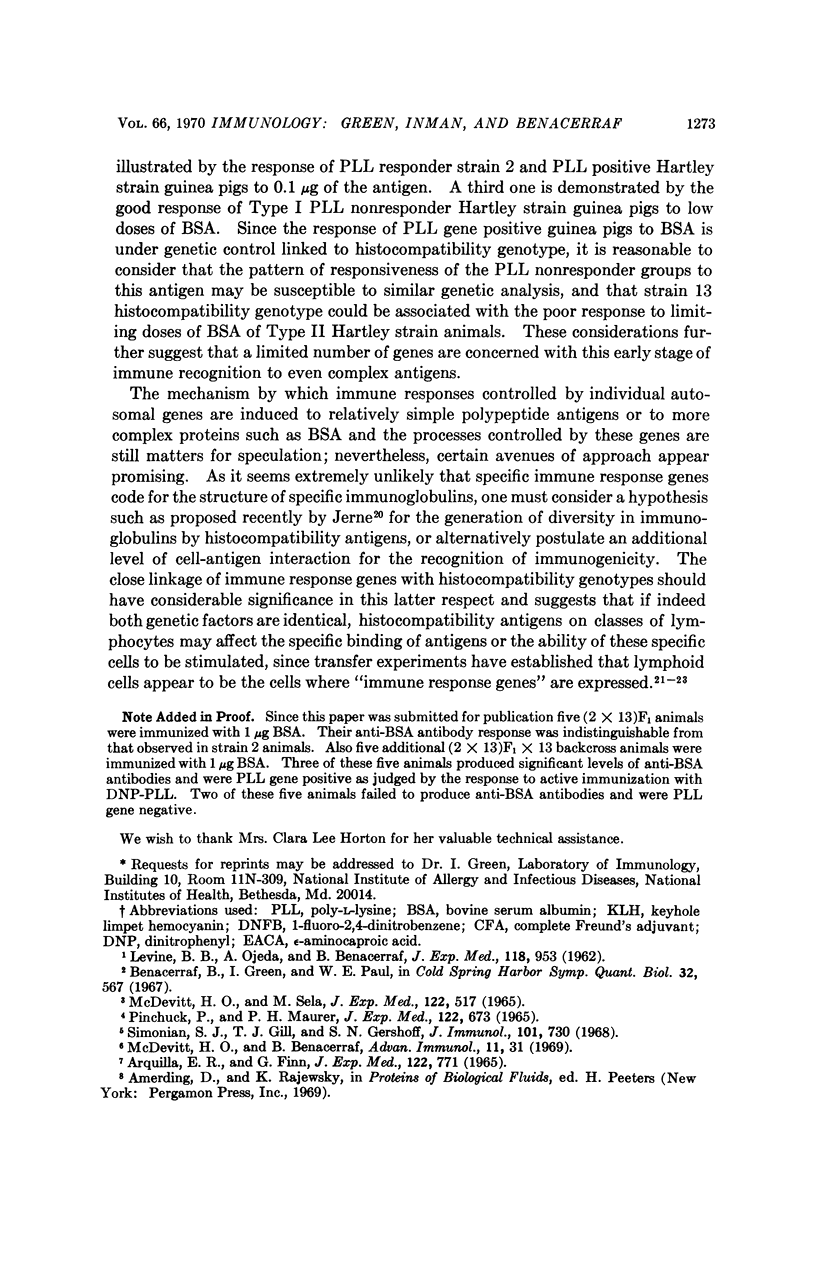
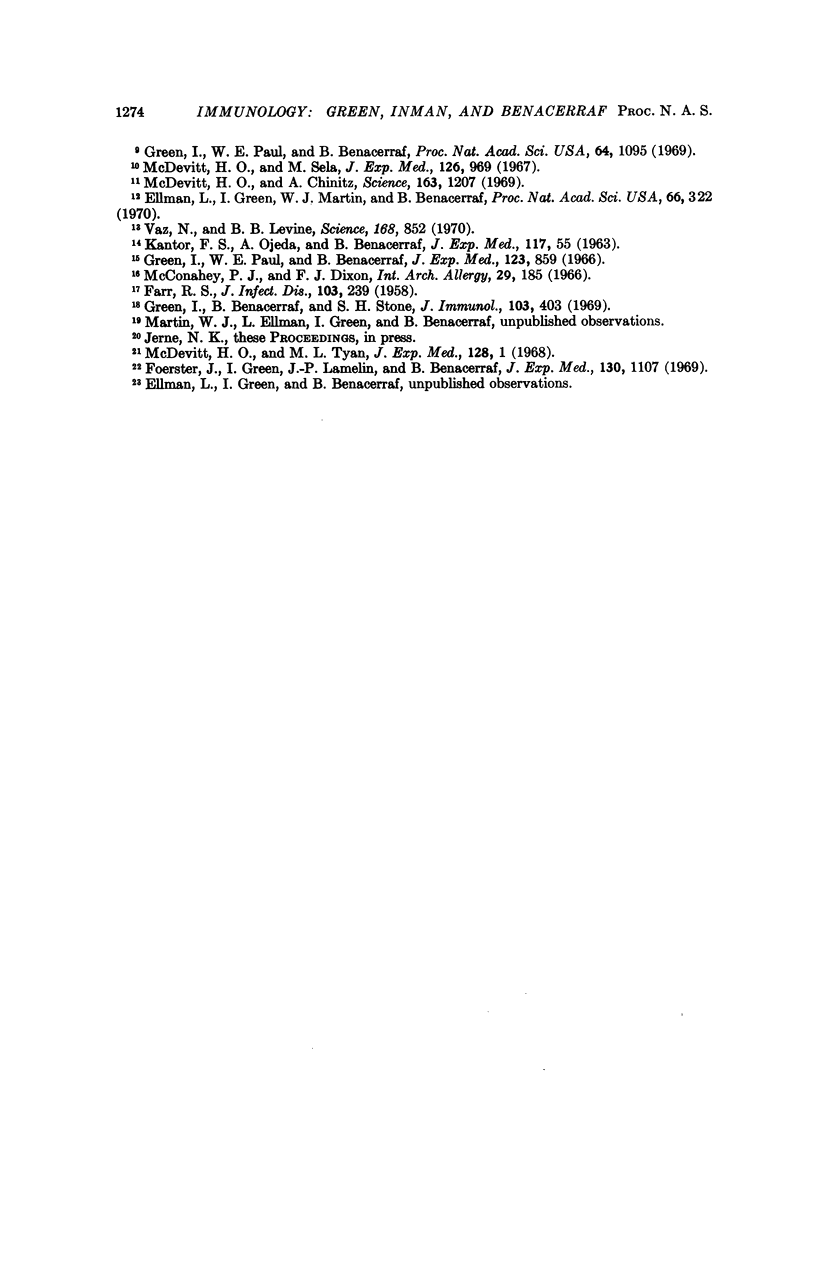
Selected References
These references are in PubMed. This may not be the complete list of references from this article.
- Arquilla E. R., Finn J. Genetic control of combining sites of insulin antibodies produced by guinea pigs. J Exp Med. 1965 Oct 1;122(4):771–784. doi: 10.1084/jem.122.4.771. [DOI] [PMC free article] [PubMed] [Google Scholar]
- Ellman L., Green I., Martin W. J., Benacerraf B. Linkage between the poly-L-lysine gene and the locus controlling the major histocompatibility antigens in strain 2 guinea pigs. Proc Natl Acad Sci U S A. 1970 Jun;66(2):322–328. doi: 10.1073/pnas.66.2.322. [DOI] [PMC free article] [PubMed] [Google Scholar]
- FARR R. S. A quantitative immunochemical measure of the primary interaction between I BSA and antibody. J Infect Dis. 1958 Nov-Dec;103(3):239–262. doi: 10.1093/infdis/103.3.239. [DOI] [PubMed] [Google Scholar]
- Foerster J., Green I., Lamelin J. P., Benacerraf B. Transfer of responsiveness to hapten conjugates of poly-L-lysine and of a copolymer of L-glutamic acid and L-lysine to lethally irradiated nonresponder guinea pigs by bone marrow or lymph node and spleen cells from responder guinea pigs. J Exp Med. 1969 Nov 1;130(5):1107–1122. doi: 10.1084/jem.130.5.1107. [DOI] [PMC free article] [PubMed] [Google Scholar]
- Green I., Benacerraf B., Stone S. H. The effect of the amount of mycobacterial adjuvants on the immune response of strain 2, strain 13 and Hartley strain guinea pigs to DNP-PLL and DNP-GL. J Immunol. 1969 Sep;103(3):403–412. [PubMed] [Google Scholar]
- Green I., Paul W. E., Benacerraf B. Genetic control of immunological responsiveness in guinea pigs to 2,4-dinitrophenyl conjugates of poly-L-arginine, protamine, and poly-L-ornithine. Proc Natl Acad Sci U S A. 1969 Nov;64(3):1095–1102. doi: 10.1073/pnas.64.3.1095. [DOI] [PMC free article] [PubMed] [Google Scholar]
- Green I., Paul W. E., Benacerraf B. The behavior of hapten-poly-L-lysine conjugates as complete antigens in genetic responder and as haptens in nonresponder guinea pigs. J Exp Med. 1966 May 1;123(5):859–879. doi: 10.1084/jem.123.5.859. [DOI] [PMC free article] [PubMed] [Google Scholar]
- KANTOR F. S., OJEDA A., BENCARERRAF B. Studies on artifical antigens. I. Antigenicity of DNP-polylysine and DNP copolymer of lysine and glutamic acid in guinea pigs. J Exp Med. 1963 Jan 1;117:55–69. doi: 10.1084/jem.117.1.55. [DOI] [PMC free article] [PubMed] [Google Scholar]
- LEVINE B. B., OJEDA A., BENACERRAF B. STUDIES ON ARTIFICIAL ANTIGENS. III. THE GENETIC CONTROL OF THE IMMUNE RESPONSE TO HAPTEN-POLY-L-LYSINE CONJUGATES IN GUINEA PIGS. J Exp Med. 1963 Dec 1;118:953–957. doi: 10.1084/jem.118.6.953. [DOI] [PMC free article] [PubMed] [Google Scholar]
- McConahey P. J., Dixon F. J. A method of trace iodination of proteins for immunologic studies. Int Arch Allergy Appl Immunol. 1966;29(2):185–189. doi: 10.1159/000229699. [DOI] [PubMed] [Google Scholar]
- McDevitt H. O., Benacerraf B. Genetic control of specific immune responses. Adv Immunol. 1969;11:31–74. doi: 10.1016/s0065-2776(08)60477-0. [DOI] [PubMed] [Google Scholar]
- McDevitt H. O., Chinitz A. Genetic control of the antibody response: relationship between immune response and histocompatibility (H-2) type. Science. 1969 Mar 14;163(3872):1207–1208. doi: 10.1126/science.163.3872.1207. [DOI] [PubMed] [Google Scholar]
- McDevitt H. O., Sela M. Genetic control of the antibody response. I. Demonstration of determinant-specific differences in response to synthetic polypeptide antigens in two strains of inbred mice. J Exp Med. 1965 Sep 1;122(3):517–531. doi: 10.1084/jem.122.3.517. [DOI] [PMC free article] [PubMed] [Google Scholar]
- McDevitt H. O., Sela M. Genetic control of the antibody response. II. Further analysis of the specificity of determinant-specific control, and genetic analysis of the response to (H,G)-A--L in CBA and C57 mice. J Exp Med. 1967 Nov 1;126(5):969–978. doi: 10.1084/jem.126.5.969. [DOI] [PMC free article] [PubMed] [Google Scholar]
- McDevitt H. O., Tyan M. L. Genetic control of the antibody response in inbred mice. Transfer of response by spleen cells and linkage to the major histocompatibility (H-2) locus. J Exp Med. 1968 Jul 1;128(1):1–11. [PMC free article] [PubMed] [Google Scholar]
- Pinchuck P., Maurer P. H. Antigenicity of polypeptides (poly alpha amino acids). XVI. Genetic control of immunogenicity of synthetic polypeptides in mice. J Exp Med. 1965 Oct 1;122(4):673–679. doi: 10.1084/jem.122.4.673. [DOI] [PMC free article] [PubMed] [Google Scholar]
- Simonian S. J., Gill T. J., 3rd, Gershoff S. N. Studies on synthetic polypeptide antigens. XX. Genetic control of the antibody response in the rat to structurally different synthetic polypeptide antigens. J Immunol. 1968 Oct;101(4):730–742. [PubMed] [Google Scholar]
- Vaz N. M., Levine B. B. Immune responses of inbred mice to repeated low doses of antigen: relationship to histocompatibility (H-2) type. Science. 1970 May 15;168(3933):852–854. doi: 10.1126/science.168.3933.852. [DOI] [PubMed] [Google Scholar]


